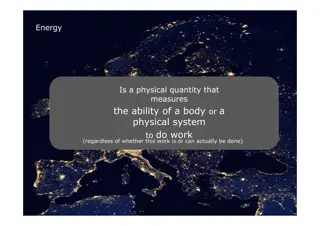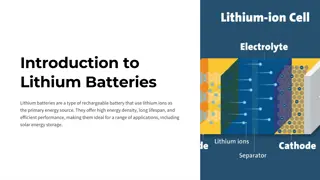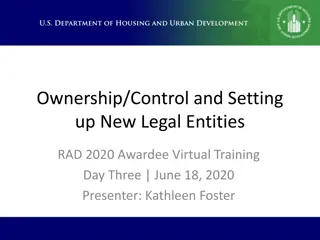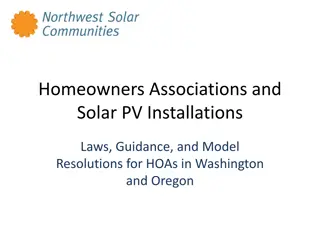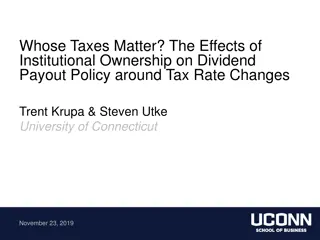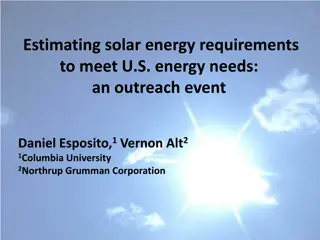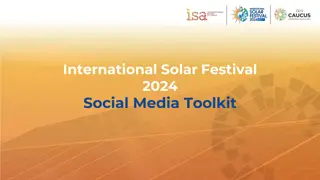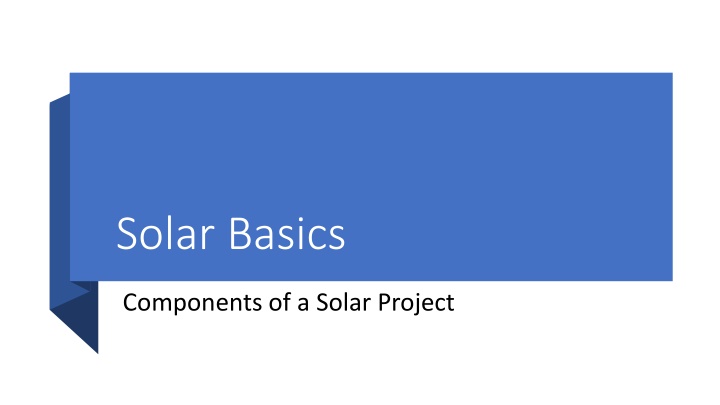
Components of a Solar Project and Ownership Structures
This content delves into the key components of a solar project, ownership structures, tax credits, and challenges faced by non-profits and low-to-moderate-income individuals. It explains the roles of solar developers, site hosts, and the implications of leasing versus ownership. Additionally, it discusses how Renewable Energy Credits (RECs) impact ownership dynamics in solar projects, particularly affecting non-profits and LMI individuals.
Download Presentation

Please find below an Image/Link to download the presentation.
The content on the website is provided AS IS for your information and personal use only. It may not be sold, licensed, or shared on other websites without obtaining consent from the author. If you encounter any issues during the download, it is possible that the publisher has removed the file from their server.
You are allowed to download the files provided on this website for personal or commercial use, subject to the condition that they are used lawfully. All files are the property of their respective owners.
The content on the website is provided AS IS for your information and personal use only. It may not be sold, licensed, or shared on other websites without obtaining consent from the author.
E N D
Presentation Transcript
Solar Basics Components of a Solar Project
ITC Investment Tax Credit REC Renewable Energy Credit PPA Power Purchase Agreement Terms & Acronyms PIS Placed in Service O&M Operation & Maintenance Net Metering Offtaker Community Solar
In a solar project, there are basically two players: The solar developer, who designs and builds the system. The site host, who owns the land or building where the system will be built. To Oversimplify The Big Question that determines structure who gets to own the solar system once it s built?
For-profit companies and wealthy individuals have high tax liability, so they can use the tax credits. They essentially get a 30% discount on their solar systems because of the federal ITC for solar. Which Owner Can Use the Tax Credits? Non-profits and moderate-to-low-income individuals do not have tax liability and cannot use the tax credit, so they have to pay full price for their solar systems.
The Market s Solution Leases & PPAs The solar developer, a for-profit, owns the system and gets the tax credits. The non-profit uses the electricity that comes from the solar system at the same price as a for-profit - but cannot own the system.
This is unsatisfactory because non-profits and LMI people are excluded from ownership unless they are willing and able to pay 30% more. Pros & Cons But PPAs and Leases are not necessarily bad deals! Many for-profits choose these structures - just like some people decide to lease, not buy, a car or home. The issue is that non-profits are in a situation where they can lease at the same price as everyone else, but cannot buy at the same price as everyone else.
How do RECs Play Into This? RECs (Renewable Energy Credits) are awarded by some states to owners of solar systems, based on kWh produced, to incentivize solar production. RECs vary from state to state. Some states have generous RECs, like Massachusetts and DC, while others are less generous, and many don t have any at all. RECs are bought and sold like stocks, and the value fluctuates RECs are essentially bonus funds that flow to the owner of the solar system, further exacerbating the problem for non-profits and LMI people, who have been priced out of ownership.
Net Metering Customers with solar are credited by the utility company when more power is produced than used Credits are applied when the system produces less than the host uses Placed in Service (PIS) The date the system is turned on and starts feeding power into the grid The date the IRS needs Other Terms, Defined Offtaker The end user of the electricity produced Community Solar A large host that sells 50% of power generated to others




